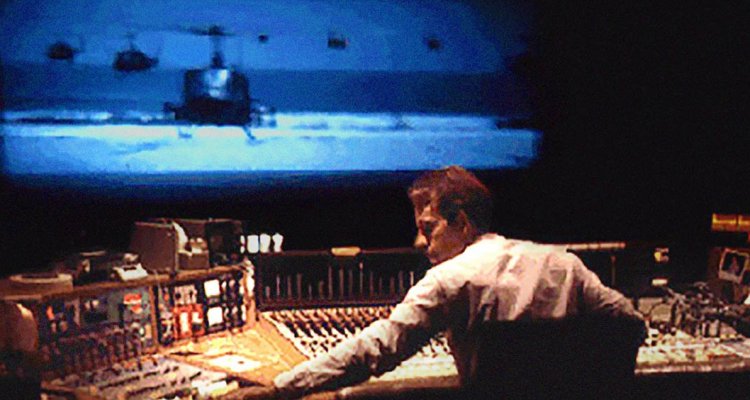Sound is half of the film experience, but the subconscious, lesser understood half, as director Midge Costin both shows and helps to rectify in “Making Waves: The Art of Cinematic Sound.” As both a longtime former sound editor and a professor at USC, Costin is a perfect source for this authoritative, concise, and entertaining look at the history and practice of cinematic sound, which features an impressive array of directors and the biggest names in sound design.
READ MORE: Tribeca Film Festival: 15 Must-See Movies
While everyone knows that movies were once silent, sound people are fond of reminding that Edison only invented moving pictures to accompany his phonograph, which he considered a superior invention. However, the limitations of film technology created a situation where sound innovation lagged behind somewhat. “Making Waves” gives a brief overview of early film sound, giving special notice to “King Kong” as a milestone in expressive sound effects and “Citizen Kane” for Welles’ incorporation of radio techniques. A constant refrain in the movie is the dismissal of the importance of sound by studio executives; the film argues that most advances in cinematic sound were fought for and won by dedicated artists over the objection of executives. These dedicated artists included both directors and sound designers, but “Making Waves” shows that the most successful innovators were often duos including both.
READ MORE: The 100 Most Anticipated Films Of 2019
The first significant innovator was Walter Murch, who had the good fortune of joining with the forward-thinking Francis Ford Coppola on “The Godfather” and “Apocalypse Now,” moving away from traditional studio sound techniques to incorporate techniques from experimental music and elsewhere. Murch cites the influence of John Cage in “The Godfather,” specifically in the scene leading up to Michael killing Sollozzo, what Murch describes as “hearing the firing of his neurons as he makes the decision… it’s not technically music, but it conjures up emotion and meaning.” Following in Murch’s footsteps from USC was Ben Burtt, the effect savant who created the many sounds of the Star Wars universe for George Lucas. The best visual aid of “Making Waves” might be Burtt’s handmade Star Wars map of Los Angeles, which shows where in the LA area Burtt took his tape recorder to capture various sounds that he later transformed into effects like lightsabers and Wookie cries. While discussing the 1970s, Costin also singles out Barbra Streisand for praise, due to her efforts to ensure sound quality in films like “A Star is Born” as well as Robert Altman, for his pioneering multitrack work on “Nashville.”
Just as Burtt was first hired when Murch wasn’t available, Gary Rydstrom was first hired by Pixar when Burtt wasn’t available. Rydstrom went on to usher cinematic sound into the digital age, working both with Pixar on “Toy Story” and Spielberg on “Jurassic Park.” As “Making Waves” reaches closer to the present day, it shows how sound work has transitioned from the work of individuals to the work of small teams, which it likens to an orchestra.
The greatest asset of “Making Waves” is its wealth of insider knowledge and its access to studio archives and the luminaries of the sound design industry. On the other hand, this extreme focus on Hollywood is sometimes a drawback, as the film doesn’t really explore any non-American films, avante-garde movies or anything independent except a brief chat with David Lynch. Regardless, “Making Waves” covers an impressive amount of ground in 90 minutes and is a perfect introduction to the subject for a student or casual fan. [A-]
Follow along with all our coverage from the 2019 Tribeca Film Festival here.

